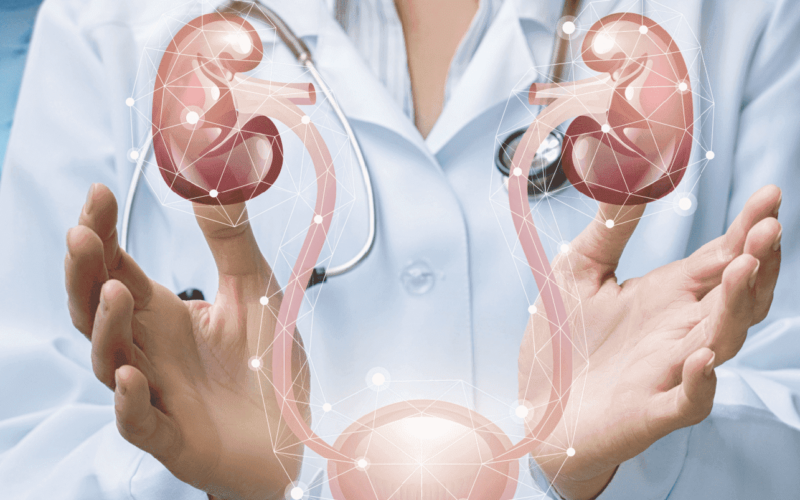Any pain or dysfunction that occurs in the area of the uterus, cervix, vagina, bladder, or rectum comprises urogynecological disorders. These are mainly bladder, bowel and pelvic floor disorders (PFDs). One in three women (33%) are known to suffer from pelvic floor disorder once during her lifetime. Generally, PFDs occur in women who have tears in the connective tissue or have weakened pelvic muscles, resulting in pelvic organ prolapse and bladder or bowel control problems.
Common urogynecological disorders

The most common type of bladder, bowel and pelvic floor disorders are mentioned as under:
- Urinary incontinence: It is of two main types: stress incontinence and urge incontinence. Tiny leaks of urine occur due to motion stressors such as coughing, sneezing, or laughing that puts pressure on the bladder, results in stress incontinence. On the other hand, urge incontinence is due to an overactive bladder that creates a sense of urgency to use the bathroom, followed by an involuntary loss of urine before reaching toilet
- Fecal incontinence: This means the involuntary loss of solid or liquid stool that impairs the quality of life of an individual.
- Pelvic organ prolapse: It is a condition of a descent of bladder, uterus, vagina, or rectum, caused by loss of normal support of the vagina. In severe cases, females might observe a bulging tissue protruding through the opening of the vagina.
- Vesicovaginal and rectovaginal fistulas: An abnormal opening can occur between the wall of the vagina and the wall of the bladder or rectum due to some surgery or diseases. This will lead to leakage of urine or feces through vagina.
- Vaginal cysts and urethral diverticulums: These are complex, benign conditions related to the vagina and urethra.
Diagnosis of urogynecologic disorders

In order to diagnose urogynecological disorders, certain tests need to be followed, including:
- Medical history and physical pelvic examination: Your healthcare provider will take down your entire medical history and conduct a physical examination and a pelvic examination.
- Urine culture and analysis: The examination of urine sample might reveal an infection, inflammation, blood or other underlying kidney disorder.
- Cystoscopy: This is performed in a clinical set-up wherein the healthcare practitioner looks directly inside the bladder with the help of a small camera inserted through the urethra. This test usually helps to detect an inflammation, stones, or tumor.
- Multi-channel urodynamics: Urodynamic testing is done to establish the bladder’s function. This test is particularly useful for women suffering from urinary incontinence or urinary frequency.
Treatment of urogynecologic conditions

Once the diagnosis has been done, it is important to treat every condition impacting the pelvic floor. Often, PFDs can be treated without the hassles of undergoing a surgery. Non-surgical methods of treatment include pelvic floor therapy (behavioral therapy) and integrative medicine management. Below we give a brief outline of all the treatment options available:
- Surgery: Includes robotic gynecologic surgery (minimally invasive method), abdominal and vaginal surgery.
- Minimally invasive surgery for urinary incontinence: To treat stress incontinence, use of transvaginal slings ("tapes"), fascial slings and collagen injections is recommended. In case of urge incontinence, sacral nerve stimulation, which is a technique to electrically stimulate the sacral nerves, is conducted. The sacral nerves influence the behavior of the bladder, urinary sphincter and pelvic floor. This is an outpatient procedure that requires two stages of treatment. It is a highly effective, safe, and well-tolerated procedure.
- Pelvic reconstructive surgery: If you are healthy enough to undergo this test, urinary incontinence or pelvic organ prolapse can be repaired through the vagina with absolutely no visible abdominal incisions. Advanced conditions are treated through abdominal surgery.
- Laparoscopic surgery: This type of surgery is characterized by making small incisions, using specially designed surgical instruments and viewing through a laparoscope, or surgical telescope. It is used to treat a prolapsed uterus.
- Behavioral therapy: It comprises exercises and training that is safe, easy to follow, and has no side effects.
- Pelvic floor muscle training and biofeedback: Includes Kegel exercises to help in muscle control and manage leakage.
- Bladder training: This helps women suffering from urge incontinence to increase the duration of time between trips to the bathroom in order to train their bladder to hold urine for a longer time.
- Lifestyle modifications: Women should follow relaxation exercises such as breathing slowly and deeply whenever the urge strikes. Apart from this, decreasing the daily caffeine intake helps reduce or eliminate urine leakage.
- Integrative medicine management: Pessary management and use of other devices can help treat some conditions and act as a safe alternative to surgery. Medications are available to treat a host of urogynecologic problems.
By adopting a conventional and holistic approach to treat urogynecological conditions, we can improve the quality of life of women who suffer from these problems. It’s high time to come out of closed doors and discuss with your healthcare provider about the best suited treatment option for your ailment. After all, the overall well-being of women is important as it impacts the society and environment around them!
At NU Hospitals located in Bangalore, we strive to help you deal with embarrassing problems such as urinary and fecal incontinence. Diagnosing and treating pelvic floor dysfunctions is vital as it can negatively impact the quality of life. With utmost care, the urologists at NU Hospitals patiently listen to your problems and help come up with a plausible solution. Visit us today to overcome these seemingly bothersome problems related to your urogynecological system.
References.
Author: Dr. Vinod Kumar P + Dr. Pradeepa M G

